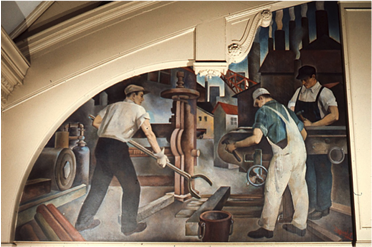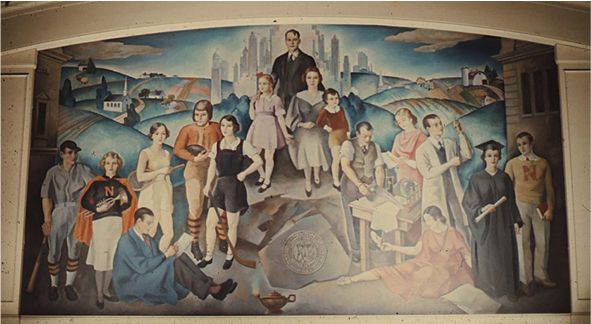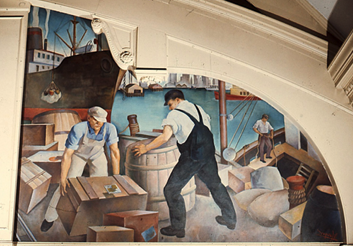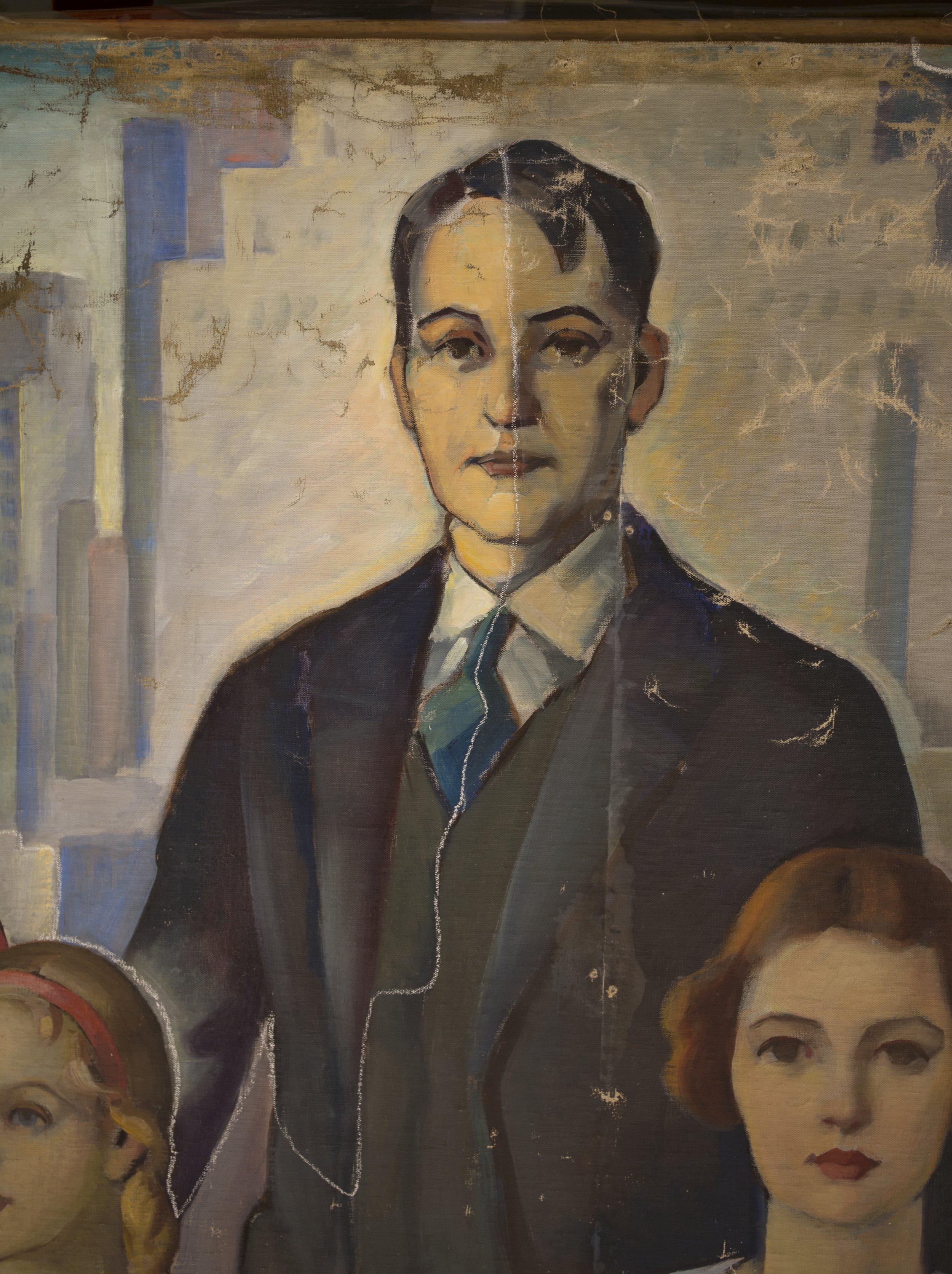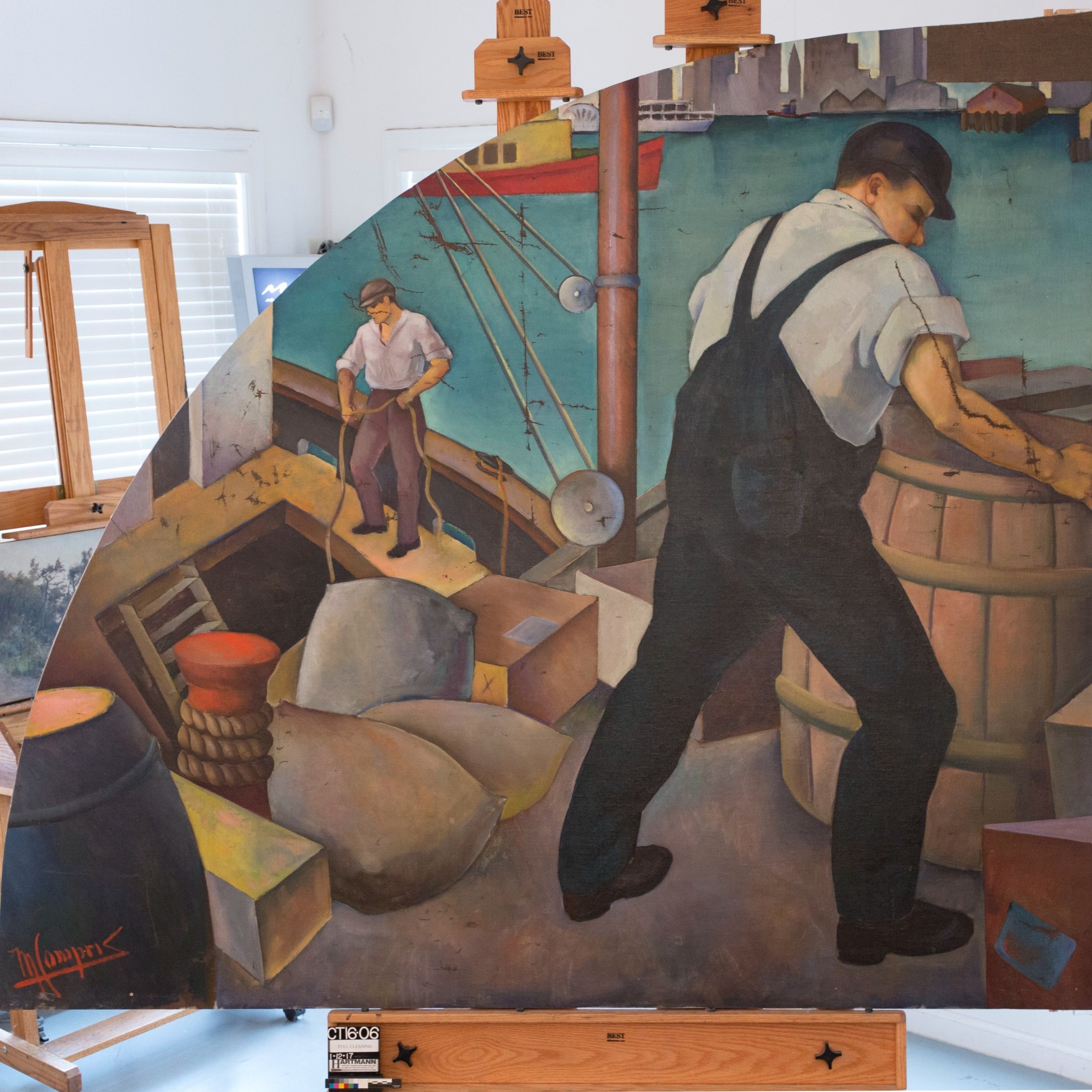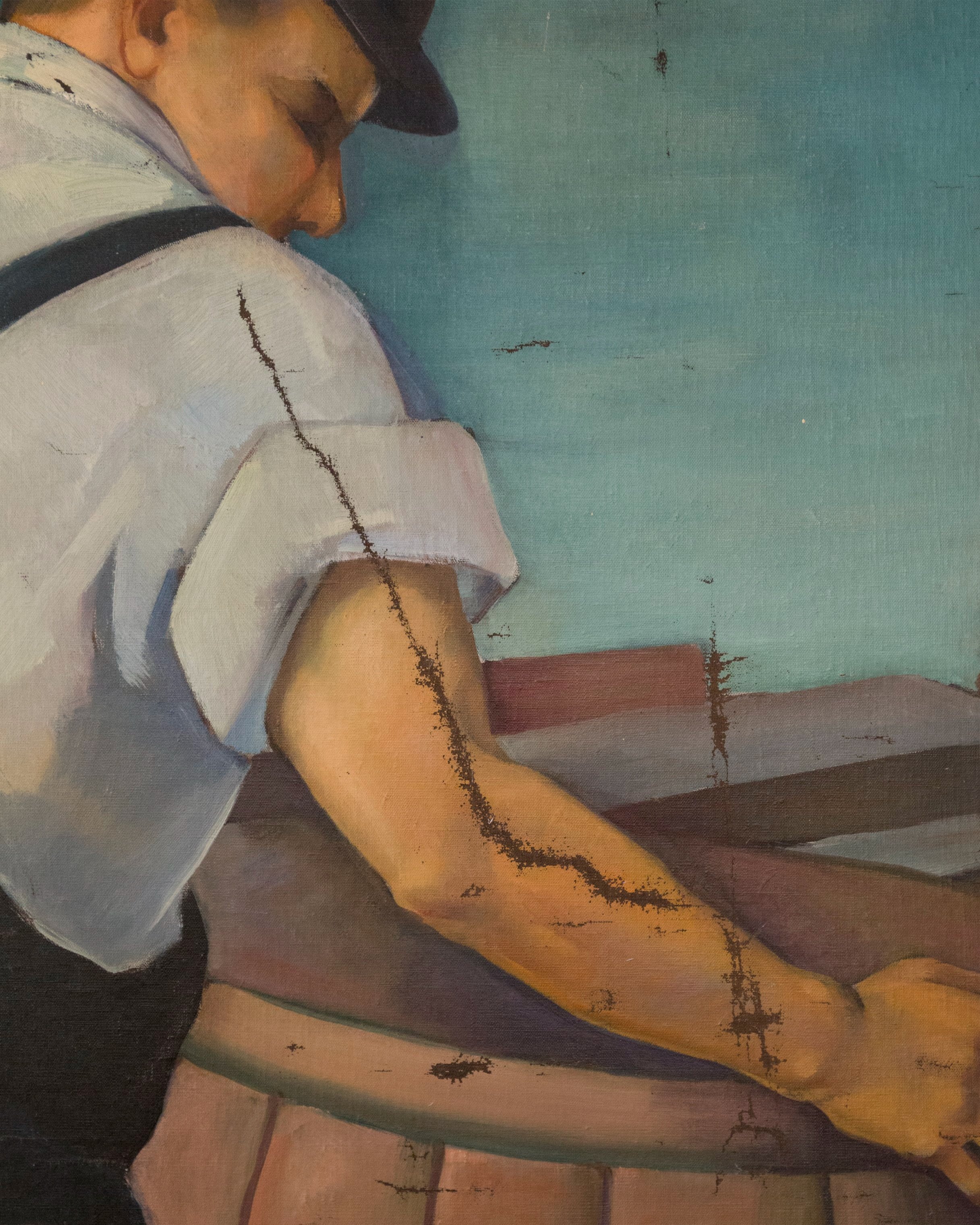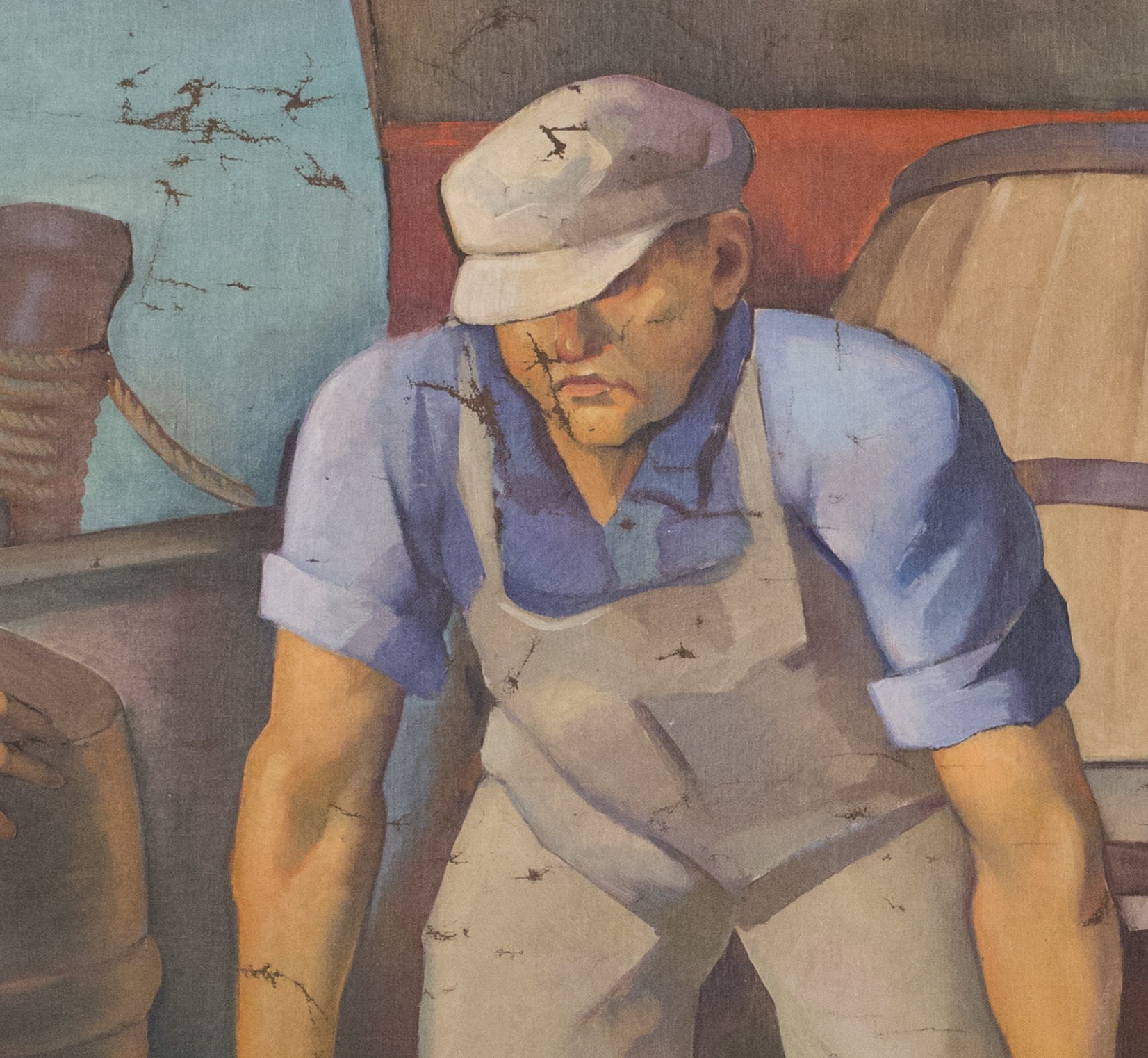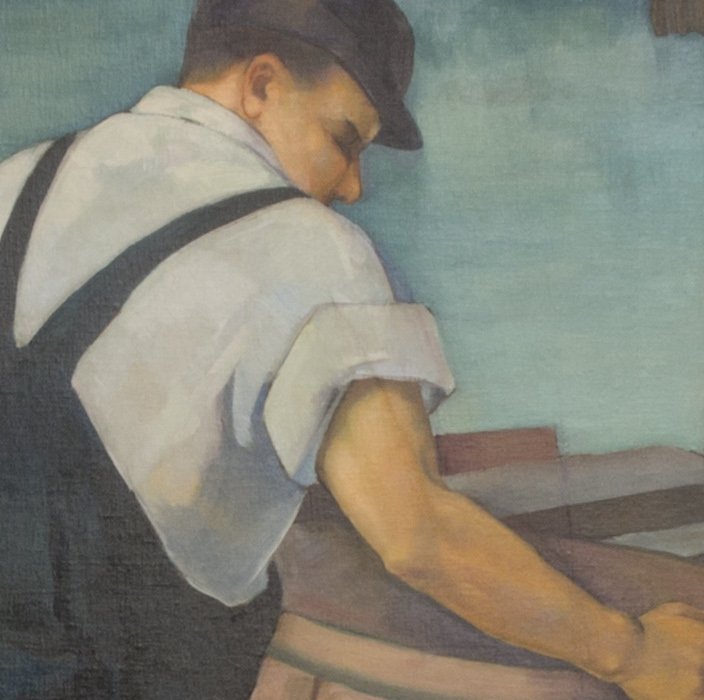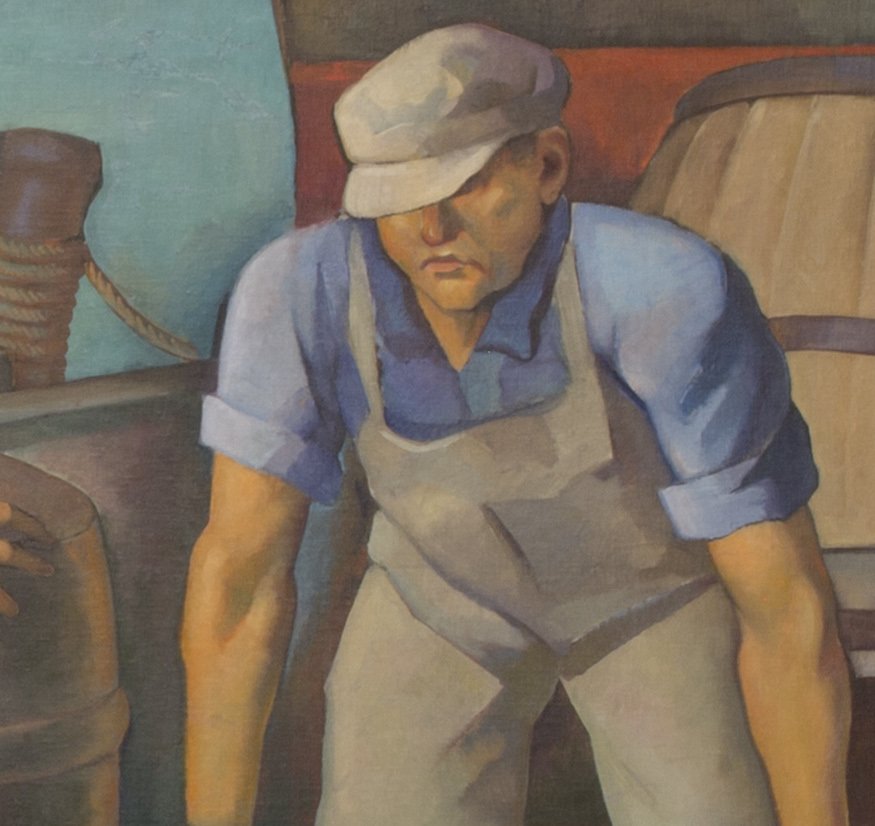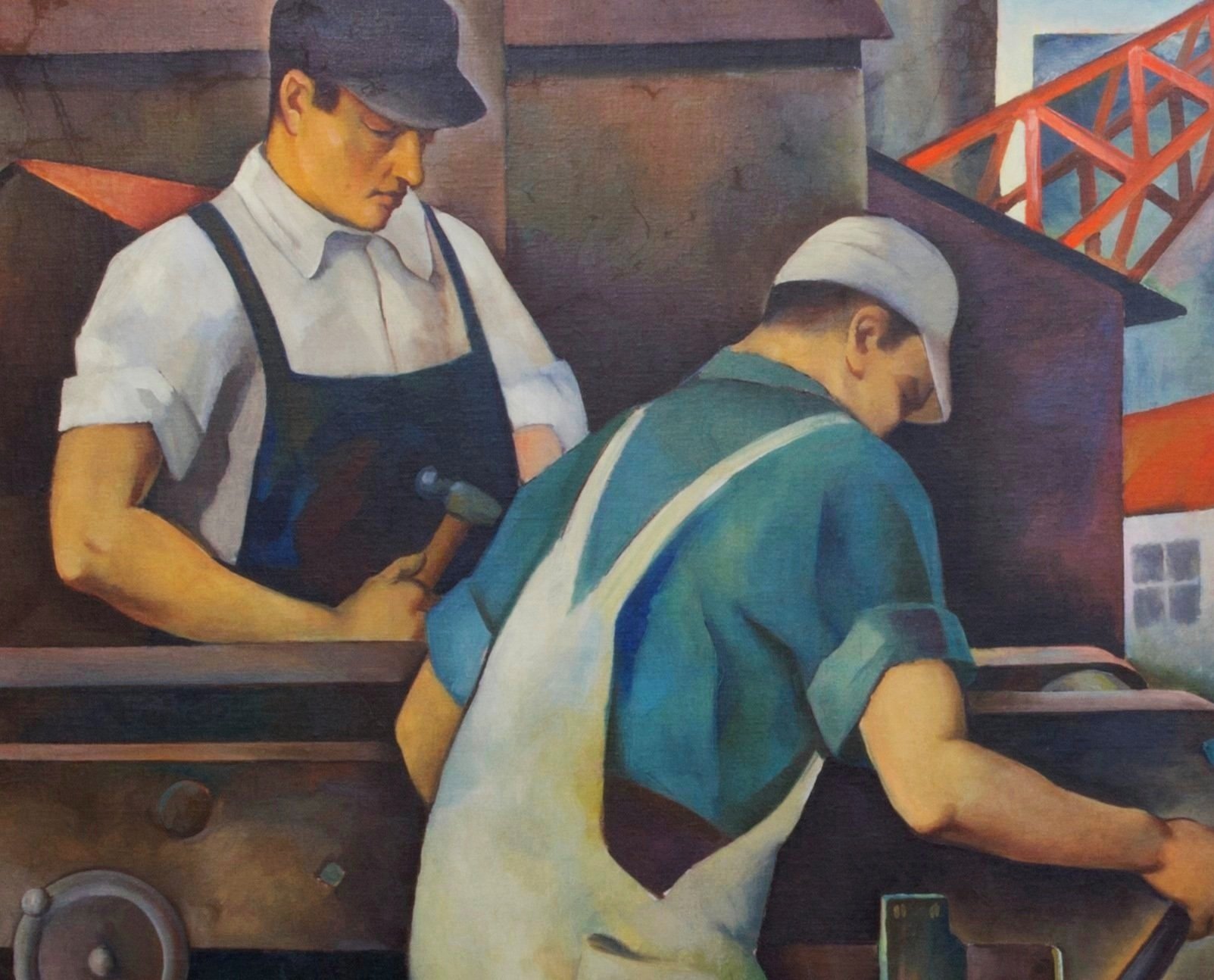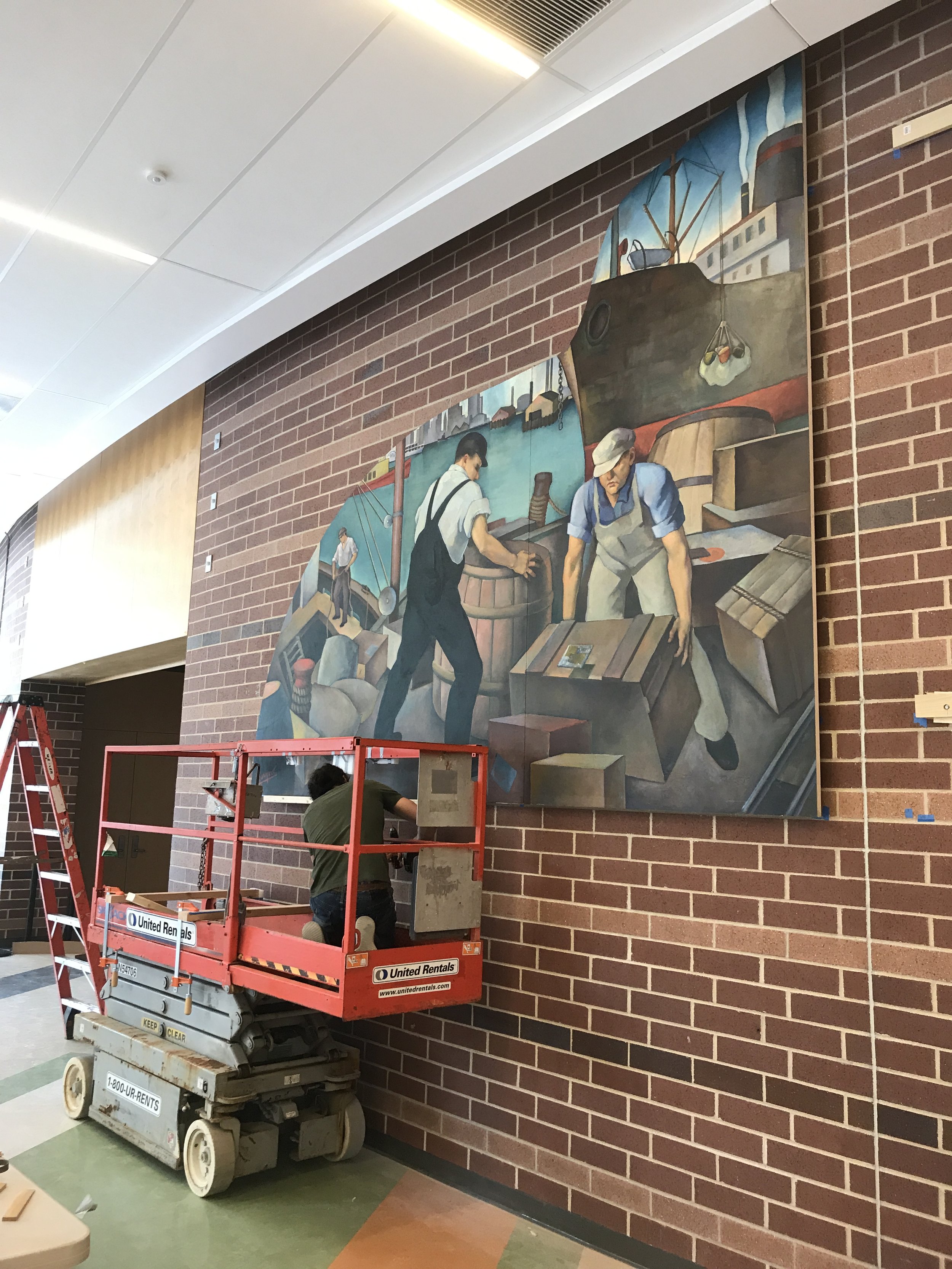Newton Public School - WPA Mural
Mural in the library of Newton High School.
-
This mural by Maurice Compris titled “Commerce, Education, & Industry” was originally mounted on a wall in the library of Newton High School in 1936. The school building was torn down in the 1970’s and Newton North High School was erected. The mural was made in three sections and the central mural – “Education” – was tacked to the wall of the cafeteria. The two flanking murals were rolled and stored in a closet where they remained for nearly 40 years. When the current building was being designed, the lead architect did not know of the existence of the flanking murals and only allocated a space in the new building for the central “Education” panel. It is the current administration’s desire to exhibit all three mural panels in the new building, and in preparation for installation they have contracted Hartmann Conservation to conserve, mount, and hang the murals.
Before Treatment - “Education”
-
The tacks holding the central mural panel to the wall in the cafeteria were placed around the edges of the mural and vertically in three equal distant lines across the mural. The mural was covered with sheets of clear acrylic to protect its surface from food spatter or student damage. The vertical tacks were applied in two parallel lines at each of the three vertical acrylic joints to hold each side of the acrylic in place. As a result of the tack application and acrylic panel edges, the canvas was considerably weakened along these vertical lines to the point of breaking, cracking, or creasing. Original paint was lost along the acrylic sheet joint lines. It is thought that this mural was only attached to the wall with tacks because there is no evidence of a second adhesive coating on the back of the canvas, or at least no different adhesive layers than found on the flanking murals backs which were in storage.
The surfaces of all three paintings are very dirty, and the paint layers have fine black soot embedded into their surface. The paintings are either not varnished, or have a very thin natural resin varnish coating. Damage or loss of paint throughout all three murals is primarily the result of pulling the painting off of the wall when it was removed from one or more locations – Newton High School’s library and again in the cafeteria in the case of the central mural. Additional damage had likely occurred to the flanking murals as a result of them being rolled and stood on end in a closet in Newton North High School for 40 (+/-) years. The paint layers are actively flaking along all crease lines in the canvas or along areas of current paint loss. The right panel “Industry,” has been the most damaged and has the greatest areas of paint loss. We have found large areas of water or liquid staining on the surface of the paintings as well. The central panel – “Education,” has the next greatest amount of paint and ground loss.
The embedded surface dirt, grime, and nicotine coatings were removed on all panels with the appropriate cleaners and solvents. Loose or flaking paint was consolidated with a synthetic varnish before being cut into smaller more manageable panel sizes.
Treatment
Fully Cleaned & Mounted - panel section.
-
During our examination of the adhesive remnants on the backs of all three canvases, we routinely test for hazardous materials. The most problematic and frequently encountered is lead, which all three paintings tested positive for. The adhesive residue layer on the back of each canvas is fairly continuous, uniform in depth, and has a smooth surface with a minimal layer of friable granular powder. This powdered layer when separated and tested also proves positive for the presence of lead. First, we vacuumed all friable residue using a HEPA vacuum. We abated the lead containing adhesive or coating from the back of each panel using all necessary safety procedures and precautions with safe and appropriate disposal of the hazardous waste product.
-
We have found that the two flanking paintings, “Commerce” and “Industry,” are in relatively stable condition. The canvas on the central panel, “Education,” has been structurally compromised along the three vertical areas where the protective acrylic sheets were secured through the painting (with nails or tacks) to the wall. Where each of the four covering sheets of clear acrylic met, there is a 1/8” wide area of lost paint and ground. The canvas is creased, partially severed, or completely broken in several isolated areas along the three vertical damage lines. To reduce the risk of causing further damage to already compromised areas while handling, we presented a solution to cut the panels into smaller, more manageable sections. If the mural was not cut into smaller sections and needed to be removed or relocated, it would not be possible to get out of the building or relocate the murals without removing it from its panel mount. After careful consideration, we felt that a very viable and appropriate treatment for this painting was to cut it into four approximately 5’ wide sections, severing it along the existing three vertical damage/crease/break lines where the previous acrylic sheeting met.
-
The backs of the paintings will be coated with a wax resin mixture. This coating will be melted/infused throughout the entire structure of the painting using the Vacuum Hot Table. The excess wax resin will be removed from the front and back of the panels.
Custom built ¾” thick aluminum clad panels with aluminum honeycomb core and wooden edge inserts will be constructed to the exact shape of each of the murals. Because the murals are so large, several smaller panels will be joined to form panels large enough to support the three paintings. The murals were cut into manageable size panels with an interlocking spline joint that can be disassembled if required in the future.
The front side of the aluminum honeycomb panels were coated with heat-activated adhesive and a wax resin infused Belgium linen inter-leafing lining canvas was applied to the front surface. This was then secured to the aluminum panel following application of the same heat activated adhesive.
-
The mounted paintings were coated with a spray application of synthetic varnish as a protective coating between the original artist’s work and our filling and inpainting. This forms a layer that is easily removed, reversing all of our surface work in the future if deemed necessary.
Losses, gouges and inserts were primed and/or filled with gesso in preparation for inpainting surface damages, abrasions, or losses.
Losses, abrasions, fills, or new canvas inserts were inpainted with conservation grade reversible paints to match the original surrounding colors and design of the artist’s work.
Inpainting Before & After
-
The murals were installed in two locations - the central part of the mural was installed in the lobby (Main Street) and the two flanking panels were installed on the exterior wall of the auditorium at Newton High School. Poplar horizontal mounting cleats were attached to the designated raised portion of the Main Street wall. It was extremely difficult to mount the panels on the Main Street wall because the specially fabricated raised panel on the wall was not flat. Once the mural was hung and sections pushed together, minor losses along edges and joints were filled with toned wax and inpainted using conservation grade paints.
The two end murals portraying industrial workers, were initially slated to be installed in the back of the main theatre, mounted on and through the acoustical foam panels. During a recent site inspection in April, it was discovered that the interior walls were not flat, but curved, making installation very difficult, time consuming, and potentially dangerous because of the heavy artwork hanging above the entrance to the theatre. It was proposed that we install the murals on the outside of the theatre. This change was approved and the decision allowed us to meet our installation deadline. These two murals, each comprised of two panels, were mounted onto the brick wall using identical pairs of cleats as used in the Main Street installation. The cleats were mounted to the walls using wooden spacers to in-fill space between the straight cleats and the curved wall. Minor inpainting was done on sight using conservation grade paints.


